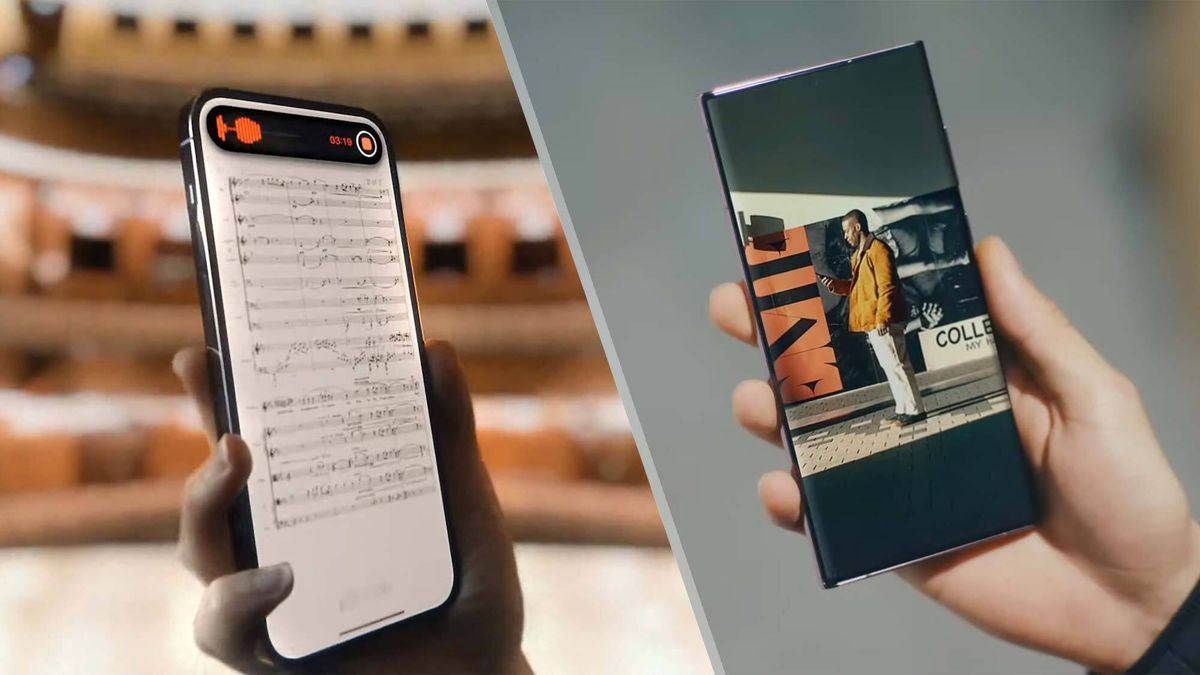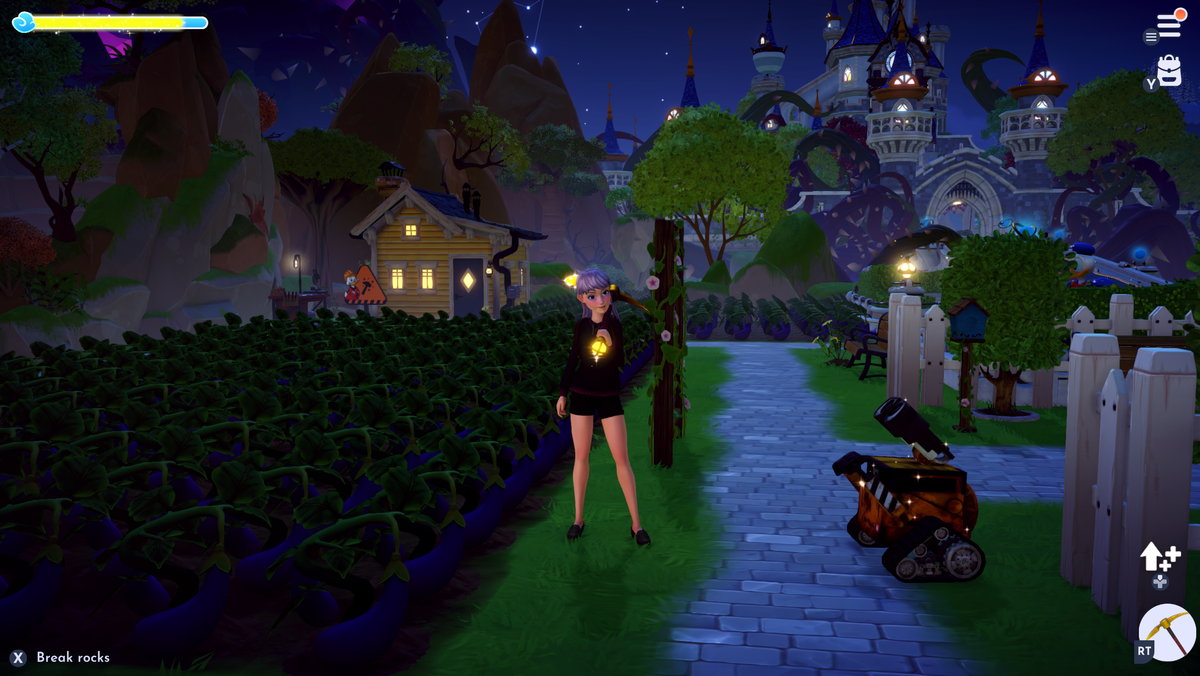The iPhone 14 vs. Galaxy S22 is a face-off that continues to fan the flames of the great iOS vs. Android debate. You’re likely looking for a deciding factor — that sparkling selling point — that helps you choose one over the other.
Forget all the noise from #TeamAndroid and #iPhoneReignsSupreme. Let’s settle this once and for all with facts, figures and good ol’ test results.
Perhaps you’re wondering, “Which one has the best set of cameras?” or “Does the iPhone 14 have better battery life than the Galaxy S22?” No matter what your question is, we’ll be diving into an in-depth comparative analysis that helps you decide which phone is best for you.
| iPhone 14 | Galaxy S22 | |
| Starting price | $799 | $799 |
| Chipset | A15 Bionic | Qualcomm Snapdragon 8 Gen 1 |
| Storage options | 128GB, 256GB, 512GB | 128GB, 256GB |
| RAM | 6GB | 8GB |
| Display | 2532 x 1170-pixel screen with Ceramic Shield display | 2340 x 1080-pixel display with Corning Gorilla Glass Victus+ |
| 120Hz? | No | Yes |
| Always-on display? | No | Yes |
| Selfie camera | 12MP, f/1.9 front-facing camera | 10MP, f/2.2 front-facing camera |
| Wide camera | 12MP, f/1/5, 1.9µm lens | 50MP, f/1,8, 1.0µm lens |
| Ultra-wide camera | 12MP, f/2.4, 120-degree FOV | 12MP, f/2/2, 120-degree FOV |
| Telephoto | N/A | 10MP, f/2.4 lens |
| Video | 8K video at up to 24 fps, 4K at up to 60 fps | 4K videos at up to 60 fps |
| Battery life (60Hz) | 8 hours and 14 minutes | 7 hours and 41 minutes |
| Size | 5.78 x 2.81 x 0.31 inches | 5.75 x 2.78 x 0.30 in inches |
| Weight | 6.07 oz | 5.89 oz |
iPhone 14 vs. Galaxy S22: Price
The iPhone 14 has a starting price of $799. It comes with 128GB of storage and the updated A15 Bionic chip. The 256GB and 512GB models cost $899 and $1,099, respectively. All configurations come with 6GB of RAM.
Thanks to Apple Trade In, you can earn up to $720 in trade-in credit toward the iPhone 14. In other words, if you own a qualifying device that yields $720 in trade-in credit, you can get the 128GB iPhone 14 model for only $80. Cha-ching! Phone carriers like Sprint, Verizon and T-Mobile are even more generous with their iPhone 14 trade-in deals, so be sure to check ‘em out.
At launch, the Galaxy S22 had a starting price of $799, too, but as of this writing, the Samsung phone costs $749 (opens in new tab), so it’s $50 cheaper than the iPhone 14. If you’re willing to pay an extra $50, you can snag the 256GB model for $799 (I highly recommend this configuration to keep the dreaded “storage full” message at bay). Keep in mind that the iPhone 14 equivalent with the same storage configuration (256GB) requires you to shell out an extra $100. While the iPhone 14 comes with 6GB of RAM, the Galaxy S22 comes with 8GB of memory.

If you own a phone that’s in good condition, you can get up to $700 in trade-in credit from Samsung. For example, if you have a well-maintained Galaxy S21+, you can get the Galaxy S22 for only $50!
With Samsung offering its 256GB Galaxy S22 model for $799, while Apple charges $899 for its iPhone 14 equivalent, the Galaxy S22 gives you more bang for your buck.
Winner: Galaxy S22
iPhone 14 vs. Galaxy S22: Design
Yawn! Both the iPhone 14 and Galaxy S22 stick to the designs of their predecessors. Yes, it’s a little boring, but both phones have slick, urbane designs, so I’m not too disappointed.
The iPhone 14 maintains that flat-edge, boxy look, reviving that iPhone 4 aesthetic. However, the iPhone 14 freshens up its passe design with a slim-bezel display and a notch that houses the selfie camera and Face ID hardware. Keep in mind, however, that the Pro Models, the iPhone 14 Pro and the iPhone 14 Pro Max, ditch the notch for a cool new Dynamic Island look.
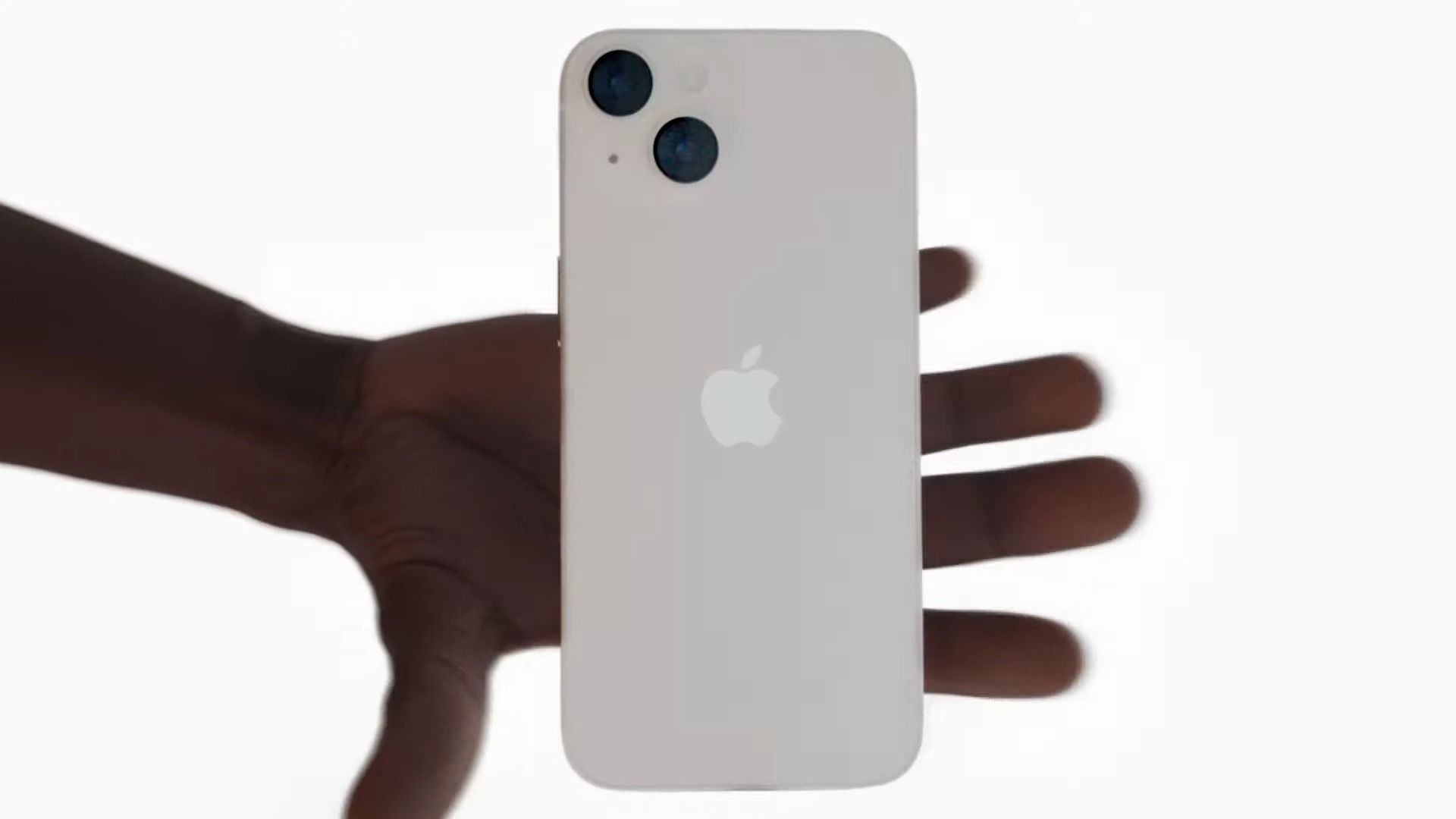
On the rear, you’ll find the two-camera setup that screams, “I’ve got an au courant iPhone!” The lenses are set in a diagonal position inside a squircle casing.
The Galaxy S22, on the other hand, houses three cameras inside a rectangle-like module on the top-left corner. As mentioned, the Galaxy S22 is not a significant departure from the S21, but it has a slightly smaller 6.1-inch display compared to its predecessor’s 6.2-inch screen.
The Galaxy S22 sports an aluminum frame that Samsung claims is its “strongest ever.” The company also boasted that the Galaxy S22 features a “protective” Corning Gorilla Glass Victus+ material that can be found on the front and back of the chassis. Despite these claims, third-party drop testers discovered that the Galaxy S22 is more susceptible to breakage compared to the iPhone 13, which sports the same aerospace-grade aluminum chassis and Ceramic Shield display as the iPhone 14.
You may be wondering, “Does the Galaxy S22 have an S Pen?” Unfortunately, the answer is no. You’d have to snag the Galaxy S22 Ultra (opens in new tab) for that.
The iPhone 14 and Galaxy S22 are both water resistant, but the former can only handle up to five feet of submergence for 30 minutes. The latter can stomach a maximum of 19.7 feet for up to a half an hour.
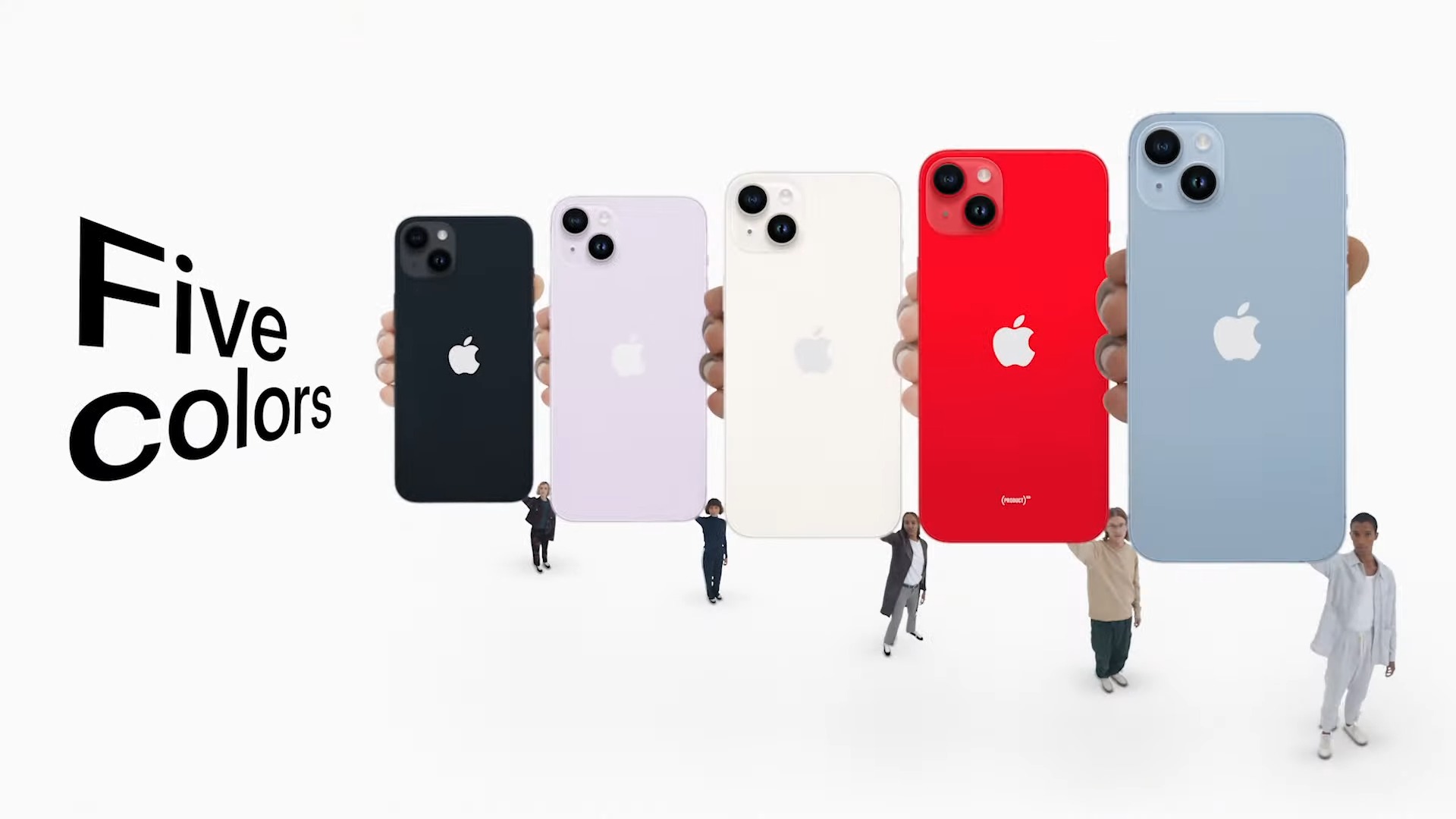
The iPhone 14 comes in Blue, Purple, Midnight, Starlight and Product(red). The Galaxy S22 is featured in Bora Purple, Pink Gold, Phantom Black, Phantom White and Green. And you can get Graphite, Sky Blue, and Violet Galaxy S22 variants exclusively at Samsung.com (opens in new tab).
Winner: iPhone 14
iPhone 14 vs. Galaxy S22: Display
The iPhone 14 comes with a 6.1-inch, 1170 x 2532-pixel, Super Retina XDR OLED display that offers an 86% screen-to-body ratio. The Galaxy S22 also sports a 6.1-inch display, but boasts a 1080 x 2340-pixel, Dynamic AMOLED 2X panel with an 87% screen-to-body ratio.
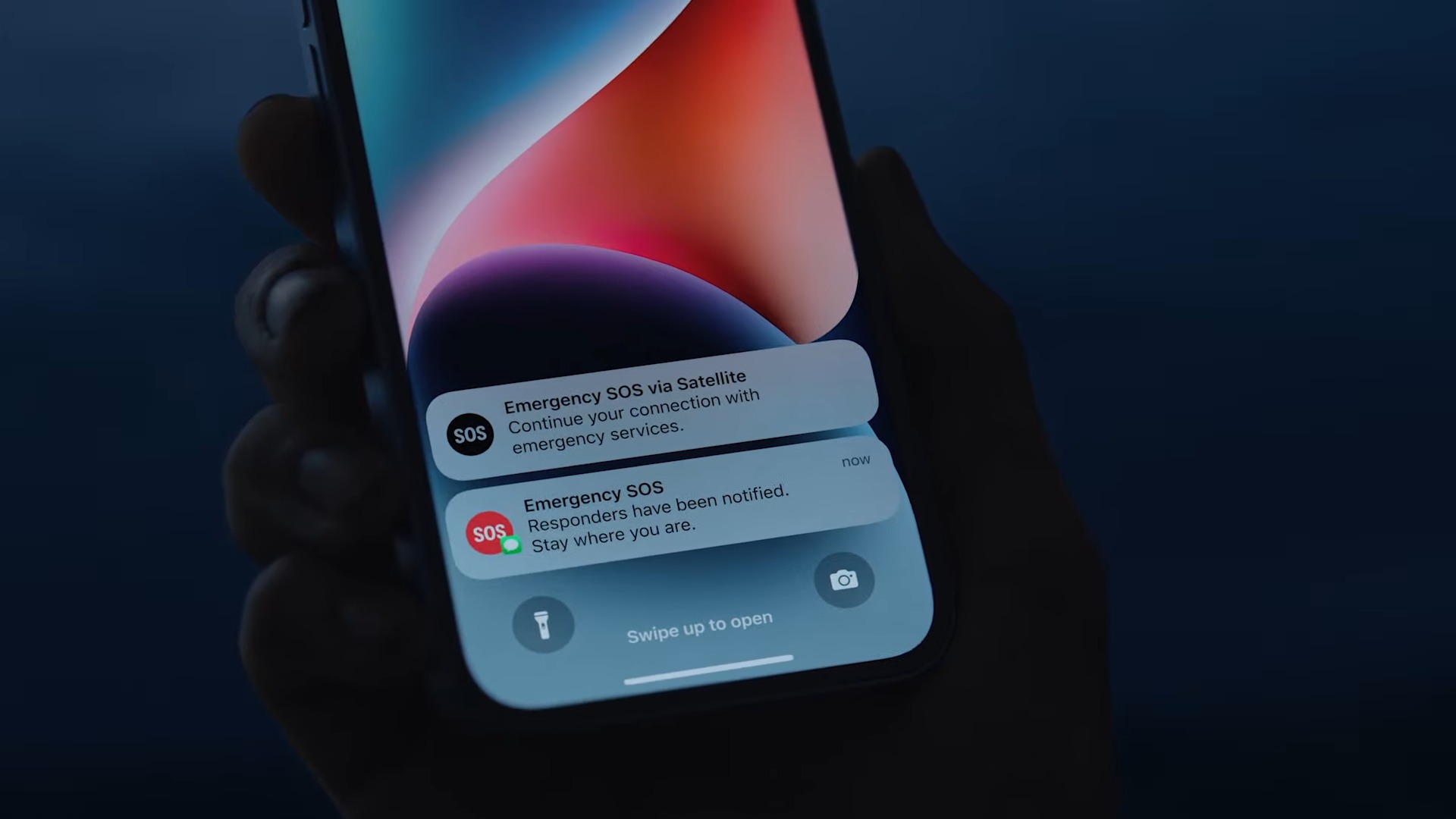
The Galaxy S22’s display can climb up to a refresh rate of 120Hz and offers an always-on display; the iPhone 14 doesn’t feature any of these perks. In other words, Galaxy S22’s screen can refresh up to 120 times per second, which is twice as fast as the iPhone 14’s 60Hz panel. The Galaxy S22’s always-on display lets you instantly view on-screen information at a quick glance. With the iPhone 14, however, you’d have to go out of your way to wake the device to read on-screen details.
While a variable refresh-rate screen and an always-on display are awesome additions, there’s a chance that the Galaxy S22 may fail to last long on a charge, but we’ll take a deeper look at that in the battery life section.
According to our colorimeter, the Galaxy S22 reproduces 79.4% of the DCI-P3 color gamut. The iPhone 14 has the edge, widening its coverage to 83.1%. Diving into color accuracy, the Galaxy S22 is slightly superior with a Delta-E score of 0.24 (closer to 0 is better). The iPhone 14’s Delta-E score is 0.25. If you value color over accuracy, the Galaxy S22 does allow you to switch to Vivid mode where you get 151.1% of the DCI-3 color gamut, but with a much worse 0.33 Delta-E color accuracy.
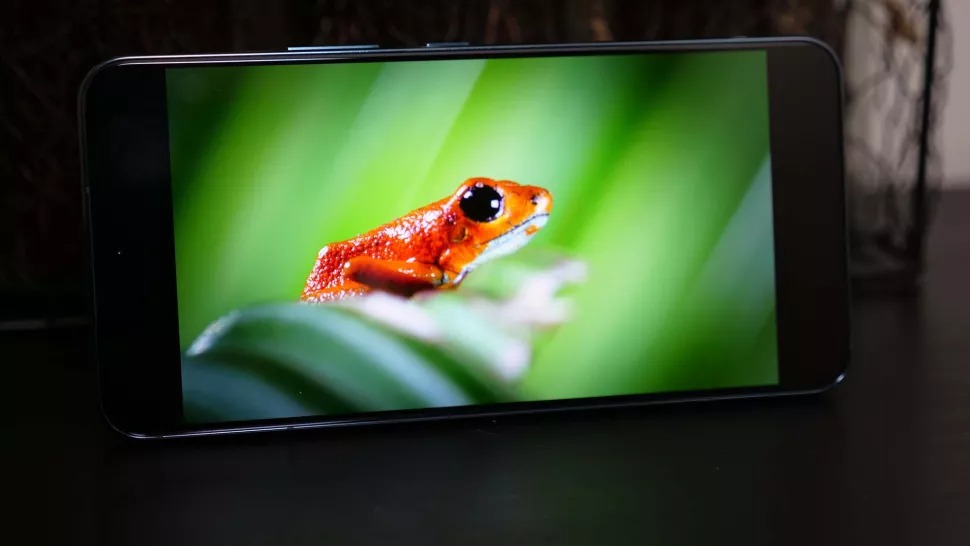
With the adaptive brightness and standard dynamic range (SDR) setting on for both phones, the Galaxy S22 climbed to 684 nits while the iPhone 14 emitted 757 nits. However, this is deceptive. With the Samsung phone, our lab testers reached 1,191 nits by tweaking the display settings (HDR, adaptive brightness on). Apple claims that users can squeeze out a peak brightness of 1,200 nits, but according to our lab results, the best we’ve seen is 758 nits (SDR, adaptive brightness off).
Winner: Galaxy S22
iPhone 14 vs. Galaxy S22: Performance
If the Galaxy S22 was personified, it would have dropped its head in shame at this point. The Samsung phone knows that it’s done for in the performance round! The iPhone 14 may still have a last-gen SoC, the A15 Bionic, but that chipset is still lightyears ahead of the competition, especially with a faster five-core GPU.
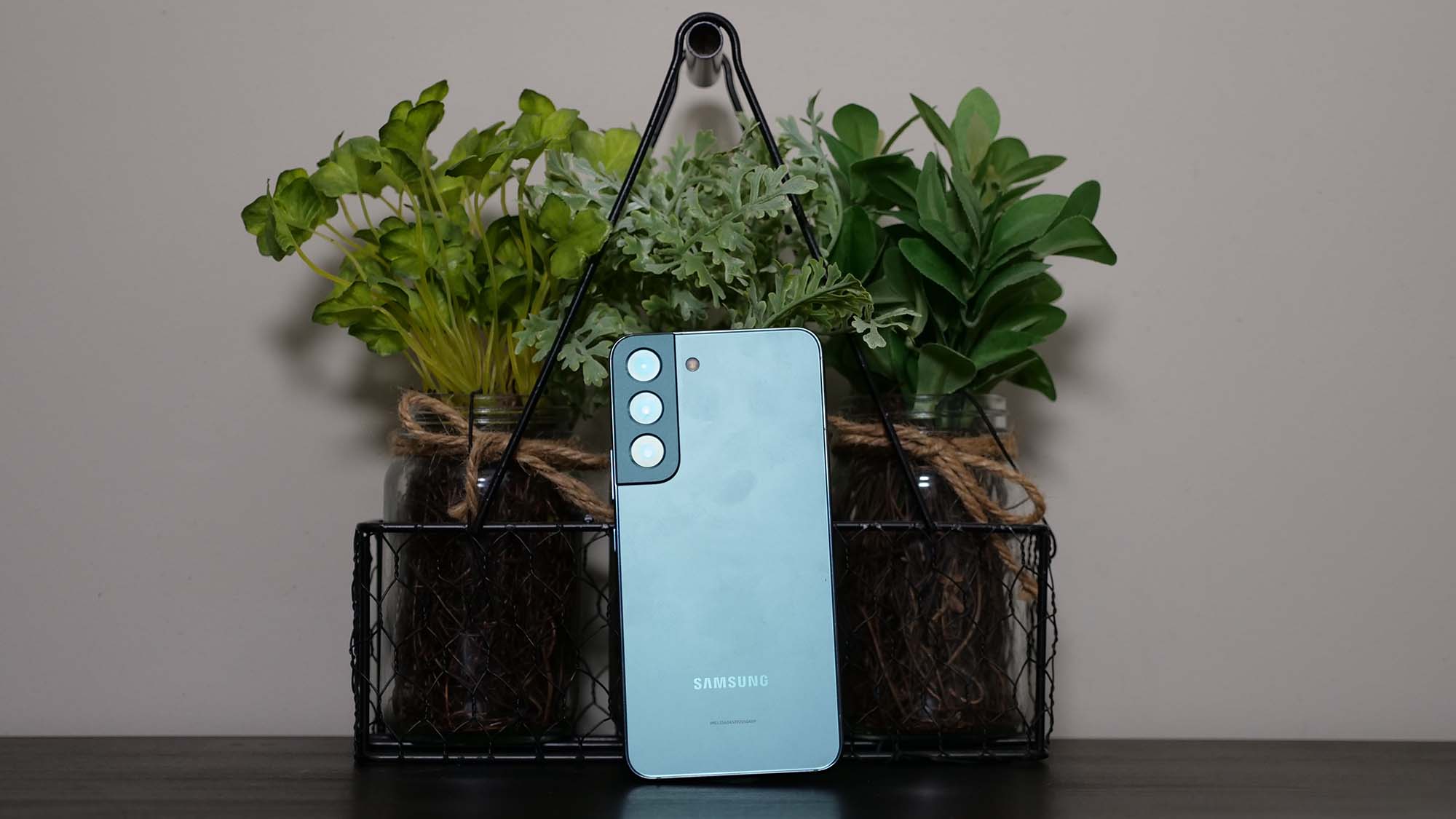
According to Geekbench 5, the iPhone 14 delivered a multi-core score of 4,553. The Galaxy S22, packed with a Qualcomm Snapdragon 8 Gen 1 CPU, reached a score of 3,341. On the Jetstream 2 browser speed test, the iPhone 14 had a result of 226, outperforming the Galaxy S22’s measly 120 score.
Cheer up, Galaxy S22! It’s not that your performance is bad — it’s just that the iPhone 14 is too mind-blowingly good. As we’ve stated ad nauseum on Laptop Mag, Apple’s A-series Bionic chipsets are way too powerful for their own good. Not even the most resource-hungry smartphone on earth could make full use of the A15 Bionic’s monstrous power.
The moral of the story is don’t be alarmed! The Snapdragon 8 Gen 1 CPU is still pretty damn good.
Winner: iPhone 14
iPhone 14 vs. Galaxy S22: battery life
This is my favorite part of any phone face-off! It’s time for the battery life round and I can’t wait to see which one has better power efficiency.
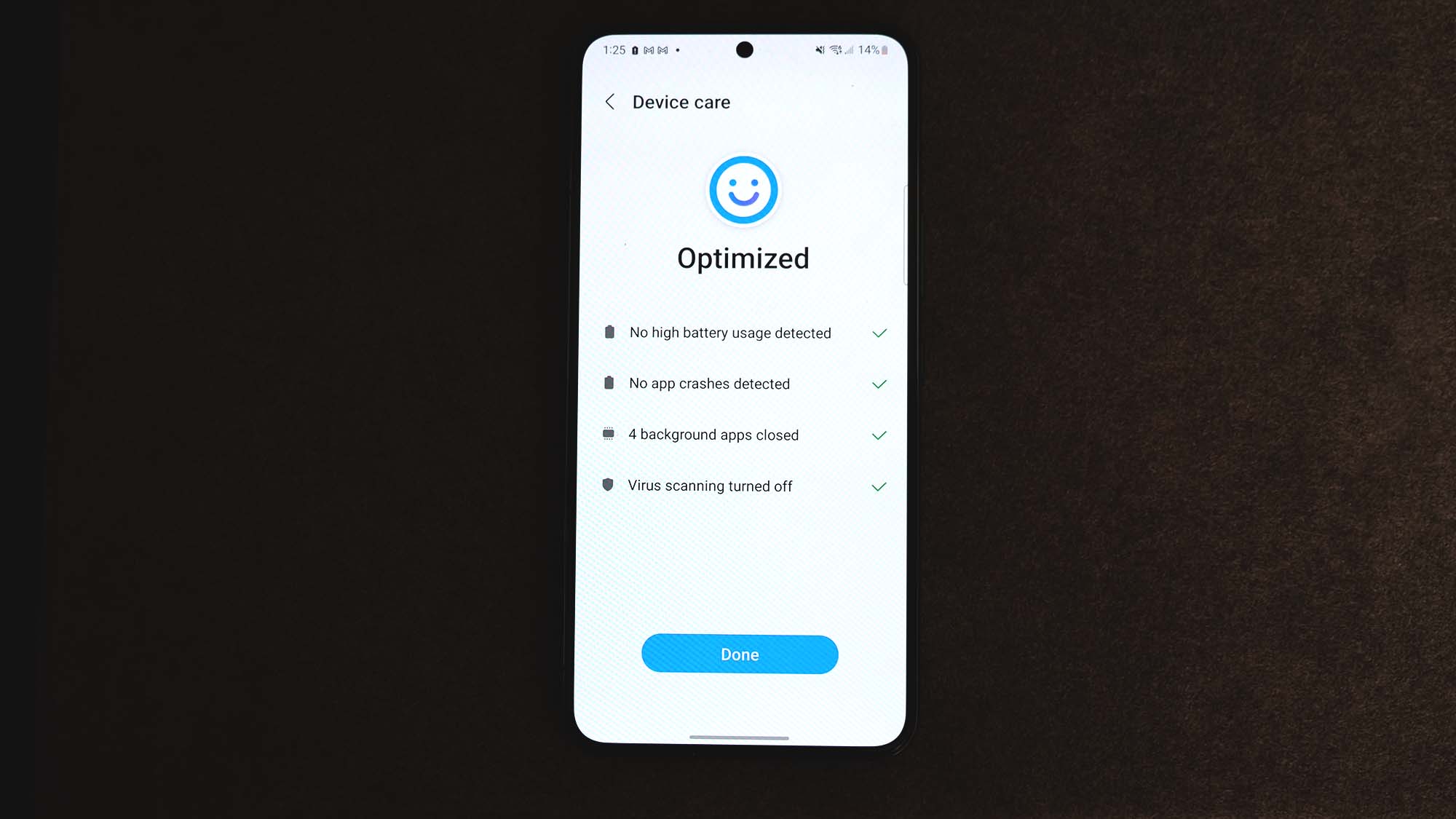
According to the Laptop Mag battery test, which involves the phone web surfing at 150 nits on a mobile network, the Galaxy S22 lasted 8 hours and 14 minutes with the screen downgraded to 60Hz. The iPhone 14, which sports a 60Hz display by default, survived for only 7 hours and 41 minutes.
With the adaptive refresh rate setting turned on, the Galaxy S22 drops down to the 7-hour mark, too, with a disappointing runtime of 7 hours and 7 minutes. Boo!
It’s difficult to choose a winner here. The battery life of both phones stink to high heavens, but for the best apples-to-apples comparison, we’ll go with the 60Hz-based results, which means the Galaxy S22 wins by a hair.
Winner: Galaxy S22
iPhone 14 vs. Samsung Galaxy S22: cameras
The Galaxy S22 features three rear sensors: an upgraded 50MP, f/1.8, 1.0µm wide camera, a 12MP, f/2.2, 120-degree ultra-wide camera, and a 10MP, f/2.4, 1.0µm telephoto lens. You can take selfies with its 10MP lens, which features an f/2.2 aperture and a 1.22 pixel count.
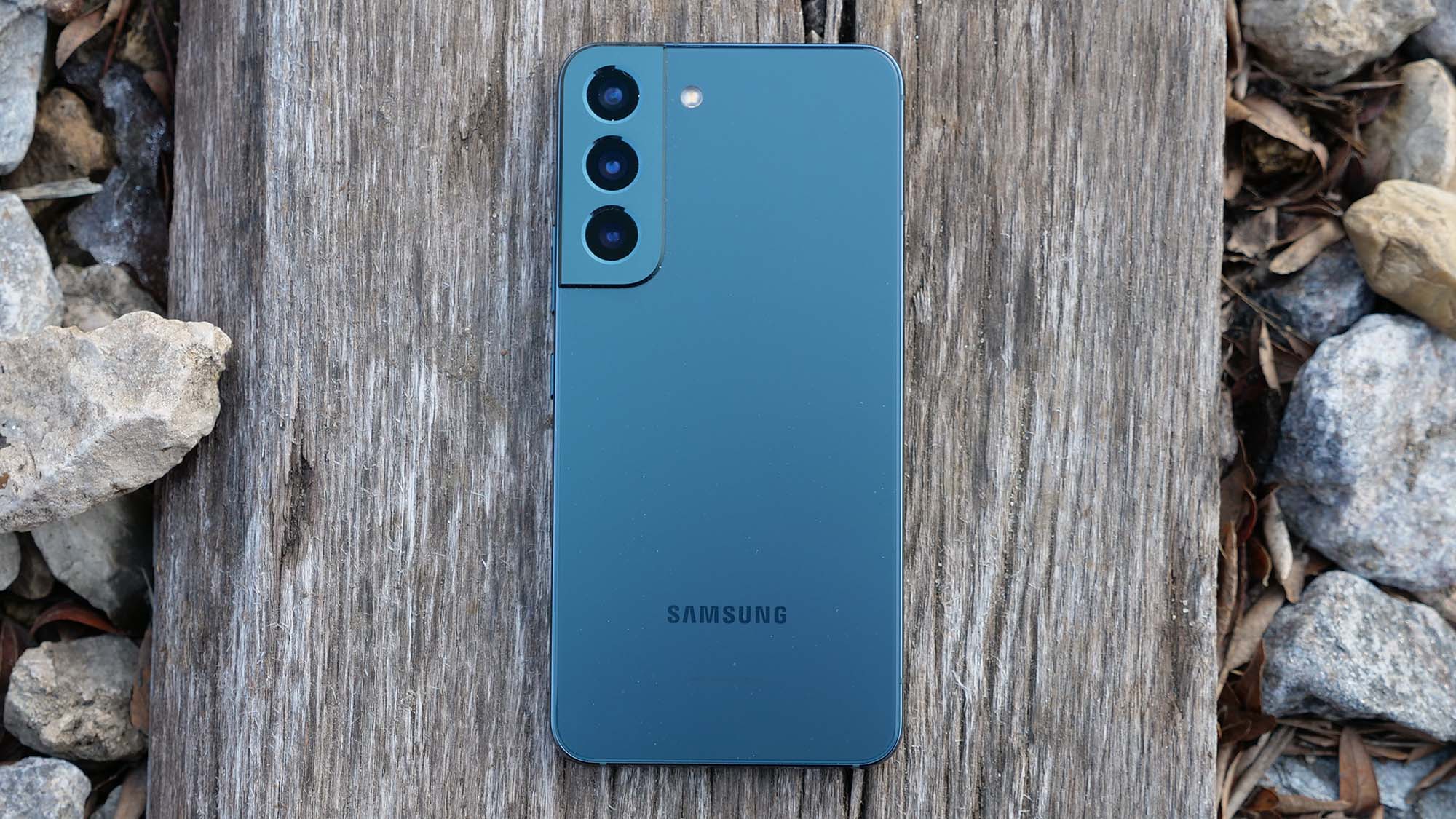
The iPhone 14 doesn’t have a telephoto lens, but sports two cameras: a 12MP wide camera with a 1.9 pixel count and an f/1.5 aperture, and a 12MP ultra-wide camera with an f/2.4 aperture and a 120-degree field of view. The iPhone 14’s 12MP TrueDepth lens, also known as the selfie camera, comes with a faster f/1.9 aperture.
On paper, the Galaxy S22 may seem like it has the better main camera, but keep in mind that, under the hood, the iPhone 14 has an industry-leading A15 Bionic chip that powers its computational photography. “Photonic engine” was one of the buzzwords that was thrown around at the iPhone 14 event, and it basically means that the entry-level iPhone uses a mélange of hardware, machine learning and software to boost the details of your pictures, especially when it comes to low-light conditions. Noise should decrease in your images while details and texture get enhanced.
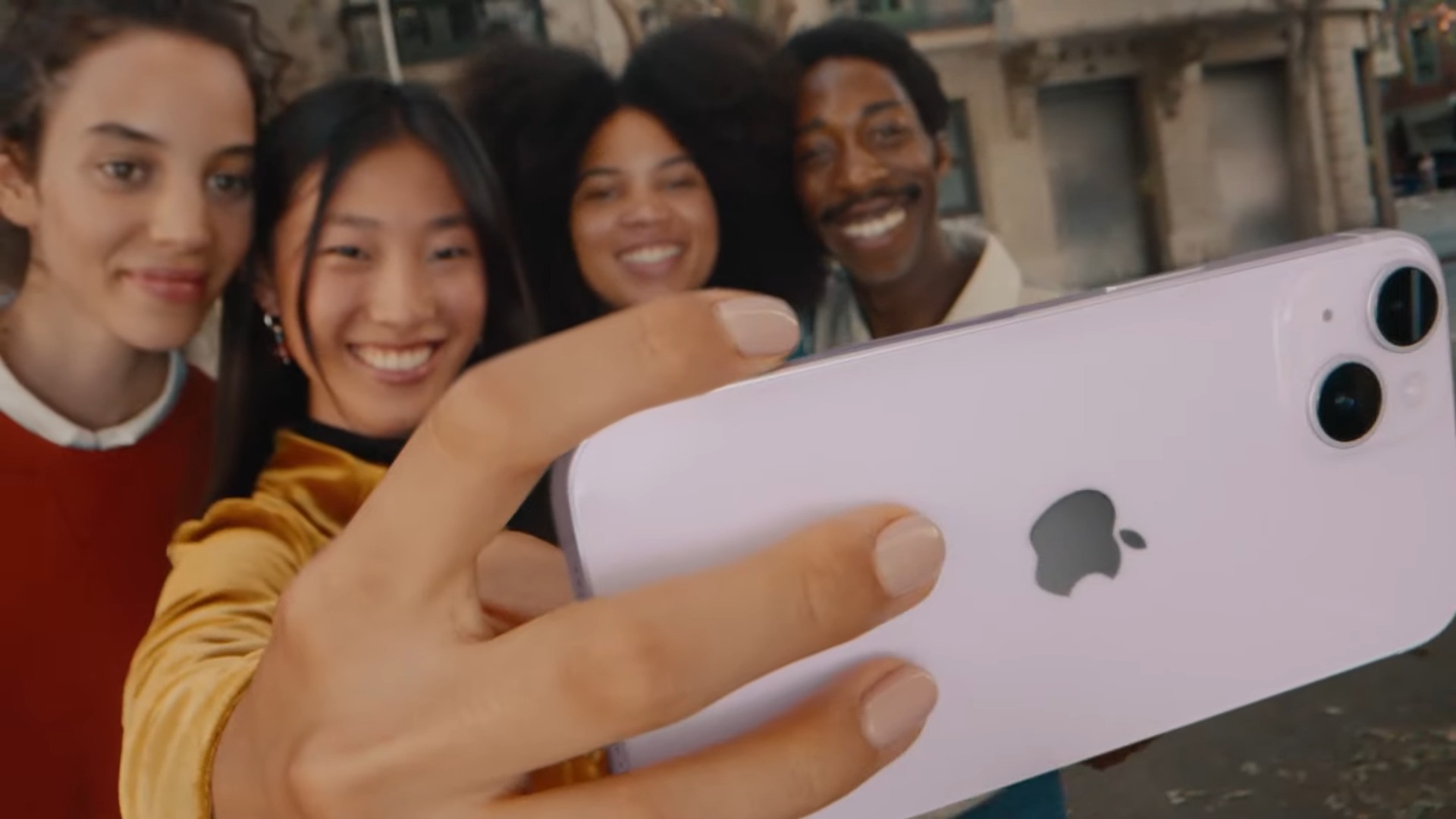
We’ll have to take the iPhone 14 camera for a test drive to know for sure, but in my experience, iPhone pictures are more true-to-life. In other words, if you’re a travel photographer, the iPhone 14 may appeal to you because the landscape photos will likely capture the “nooks and crannies” of your scenery that the Galaxy S22 can’t, thanks to the Photonic Engine. However, if you love taking photos of yourself or others without picking up too many flaws, the Galaxy S22 may be a better choice. Also, pictures on the Galaxy S22 appear to be slightly warmer in tone; the iPhone 14 leans toward cooler hues.
I’d also add that the Galaxy S22, thanks to its telephoto camera, can take better zoomed-in photos than its iOS rival.
Video
Now, let’s talk video. The new Action Mode feature Apple added to the iPhone 14 is elite. What’s Action Mode, you ask? Well, if you’re recording a scene with tons of movement, Action Mode ensures that your videos are more stabilized — as if you’re equipped with a gimbal. It’s worth noting that you can only record 2.5K videos at up to 60 frames per second (fps) with Action Mode. And let’s not forget Cinematic Mode, which made waves at the iPhone 13 event and still continues to be an enviable perk on the iPhone 14, allowing content creators to add cool rack-focus effects to their videos.
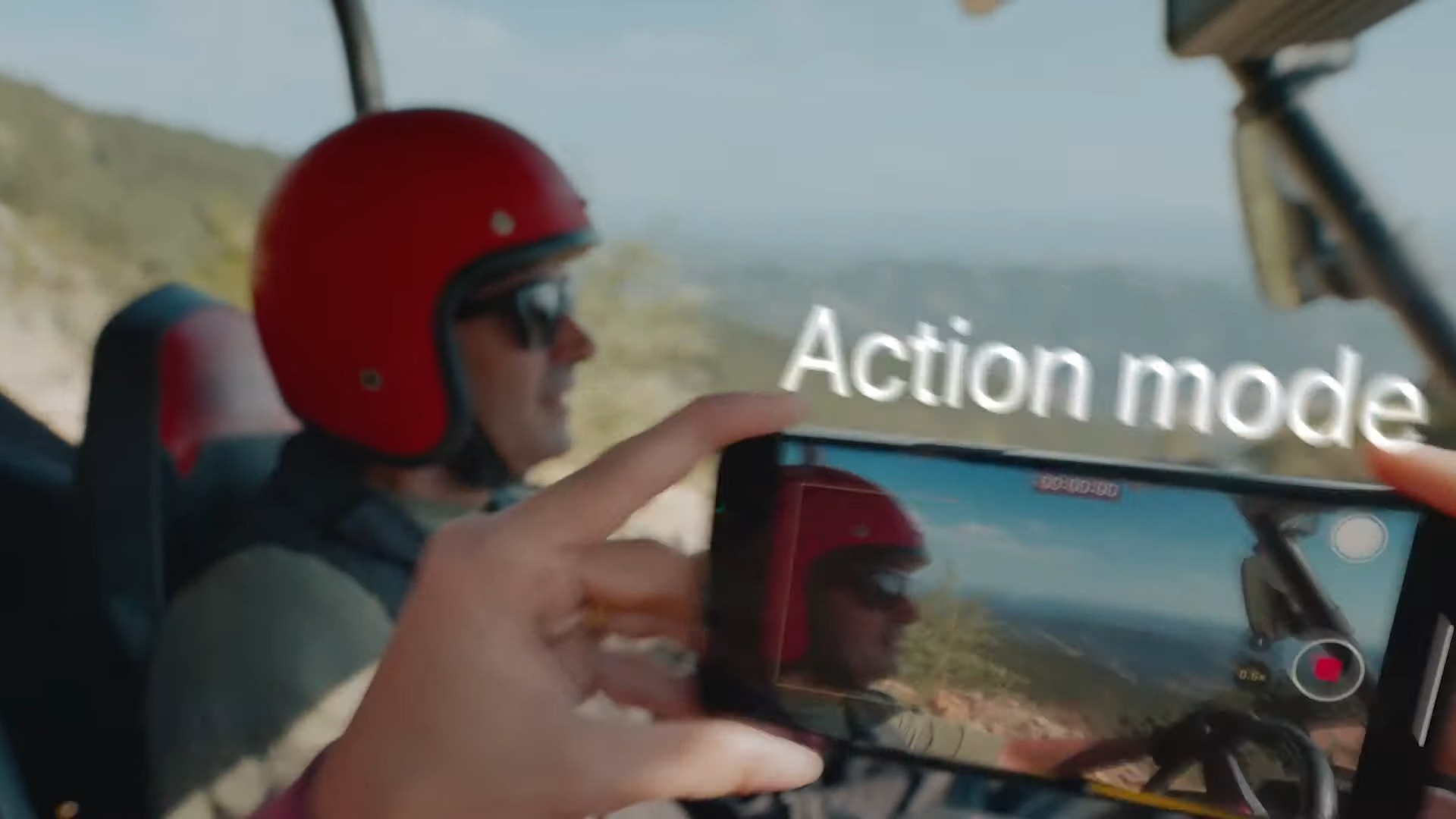
The Galaxy S22 supports 8K video at up to 24 fps. It also supports 4K at up to 60 fps. The iPhone 14 does not support 8K video recording, but you can record 4K videos at up to 60 fps.
So does the Galaxy S22 sport better cameras? It’s all a matter of taste. If you need a telephoto camera, prefer warmer-tone selfies and need 8K video recording for your YouTube channel, snag the Samsung phone. If you have an affinity for crisper, sharper, true-to-life photos, Action Mode, Cinematic Mode, and world-class computational photography, the iPhone 14 is your guy.
Winner: Draw
Overall winner: Galaxy S22
The Galaxy S22 spoils you with more goodies at a reasonable price of $749. Unlike the $799 iPhone 14, the Galaxy S22 comes with an always-on display, an adaptive refresh rate screen that can skyrocket to 120Hz, a telephoto lens, 8K video recording, and better battery life (with the 60Hz setting), and more.
On the other hand, you may argue that the iPhone 14’s battery life isn’t too far removed from the Galaxy S22’s runtime. It also has unmatched breakneck performance, top-of-the-line computational photography processing (thanks to the A15 Bionic chip), and ultra-cool video features like Action and Cinematic Mode.
Be careful, though! You may feel slightly cheated if you snag the iPhone 14. For the same price of a 128GB iPhone 14, you can get a 256GB Galaxy S22, which means more storage space to hold all of your treasured memories at a discounted price. Still, whether you choose the Galaxy S22 or the iPhone 14, you’ll be in good hands.

